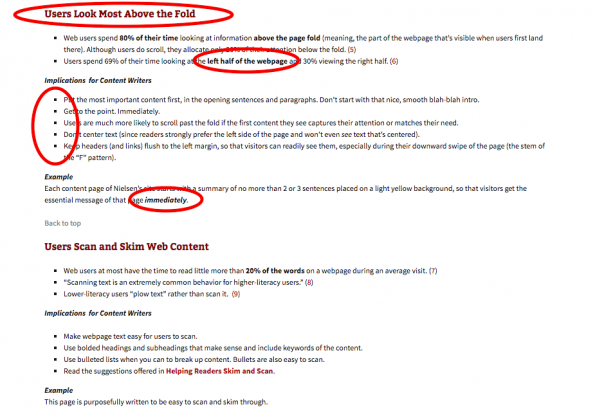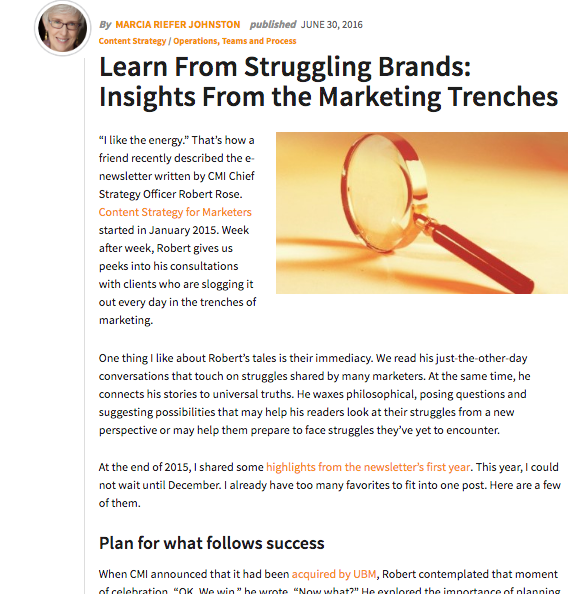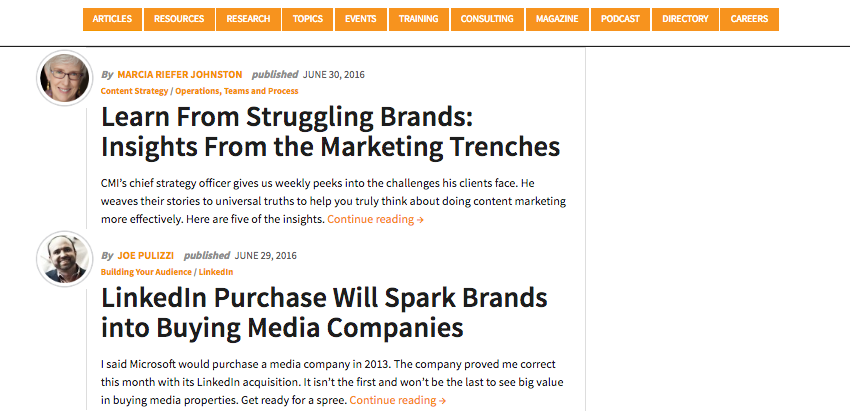3 Simple Ways to Structure Content To Make It Engaging For Both Readers and Scanners
There are numerous rules that marketers should keep in mind when they’re creating content for the internet—keep it engaging, don’t oversell, make it visually interesting, use pictures, use bullet points, etc. etc.
Buf if you have to remember just one, single thing, let it be this—your audience’s attention spans are very short.
Amid the clutter and information available on the internet, you have a very brief window to catch and hold their attention. As popular tech website Engadget reports—
“What consumers can see in one glance has everything to do with what they’ll do next. If overwhelmed by input or the lack of motivation to process it, their brain will stop taking it in.”
So, what can marketers do—beyond just using bullet points—to capture and engage their intended audience?
The answer lies in finding the right balance between content that can attract scanners, which compose majority of users today, without alienating the rare readers.
Make your content too short and your audience might think you didn’t even bother to put any effort in what you have to say. Create content that’s too long and might put off potential customers instead. You see, once you’ve captured the attention of the scanners, it’s likely that they will return to your content to gather more data and information—basically read through it. And you want them to find what they’re looking for so that their interest turns into an actual sale.
Here are some ideas on how you can do that—
1. It’s not just about using bullet points—there are other ways to break up content.
Breaking up a wall of text using bullet points is the easiest and most basic way to serve up content in short, “bite-sized” pieces to your audience. But there are other ways that you can do this to make your content more engaging.
- Use descriptive subheads that inform and describe what readers can expect from a particular section.
- Use bold, italics, or underline to emphasize certain words and/or information.
- Instead of using “click here” to link out, describe where the link goes.
How you break up your content will ultimately dictate the rhythm and cadence of your post. It’s not so much about following grammar rules down to the letter; while important, so is style and readability.
You want your content to be simple, straightforward and clear. But still have enough information to offer more details if the reader, after scanning through it, decides they want to hear more of what you have to say.

Bold, italicize, use bullets, create compelling headlines–these help break up walls of text to make it easier for users to read your content.
Here’s a quick tip: As you read through a particular section of your content, make sure the tone doesn’t sound like you’re delivering a declamation. Instead, aim for a casual conversation with a friend over coffee. That’s the tone that you want to strike.
2. Visuals are equally important to readability and engagement
Your site’s aesthetics play into the how audiences will engage with your content.
Sure, you may have managed to break up your content into easily digestible sections, formatted so that scanners and readers alike can appreciate what you have to say…but if it’s set against a cluttered layout, with garish color schemes, unreadable fonts, or flashy visuals, it’s enough to make your audience’s bounce.

The simplest formatting guidelines can help present your content in a way that’s easily absorbed by readers.
How you present your content adds to how well your audience will respond to your content. Here are some tips—
- Use white space to make it easier to focus on certain sections of your text.
- Align text to the left—visually, it gives readers a clear cue on where to start.
- Adding relevant visuals can help your readers process information quicker and understand your content.
3. Give text some breathing room
Remember in school where you were told off by teachers for using too much space in between lines of text in your book report? Forget about it.
Densely packed lines of text do nothing but tire scanners and will even turn away even the most voracious reader.
When formatting your post, be sure that you:
- Provide ample room in between lines to make it easy for readers—scanners and readers alike—to skim through your content.
- Avoid letting your text run from one side of the margin to the other—it’s exhausting for readers to maintain their reading rhythm on a wall of text and does provide visual cues for scanners to focus on.
- Try not to use text wraps as it may disrupt the natural eye movement and rhythm of a reader.

Avoid cramming lines of texts together. Give it ample space in between lines to make it easier to read.
Remember that the content you produce has the potential to nurture prospective customers and nudge them through your conversion funnel. When users arrive at you website and start reading through your blog posts or when they open an emailer that you’ve sent, they’re not always ready to buy…yet. But you can certainly help convince them.
Make sure that you deliver what you have to say in a way that they can easily process and digest; and that means structuring your content to cater to varying learning learning styles.
If you have any more ideas on how to make posts readable and more engaging, do let us know and start a discussion below.
Share This Story
Get the latest growth ideas, strategies, and best practices delivered to your inbox.
Quick read that helps 7000+ subscribers.









